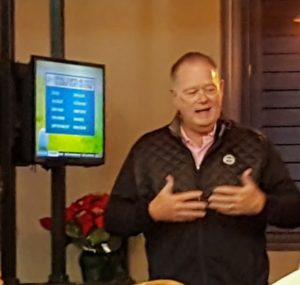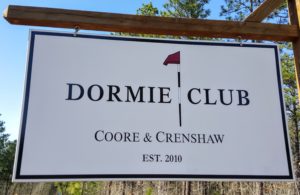
The field for the Diamond Resorts Tournament of Champions did have 26 players who had won tournaments on the LPGA circuit in either 2017 or 2018. Since the circuit tried limited field Tournament of Champions events at various sites from 1994 to 2007, bringing its winners together wasn’t all that unusual.
This latest attempt again brought out the best in LPGA talent, but it didn’t spotlight their skills for an obvious reason. There were more players from other sports or entertainment areas (49) than there were LPGA players (26) competing. That’s what can happen when you try to combine a tour event with a celebrity event. It’s no a perfect mix.
South Korean Eun-Hee Ji was the best on the LPGA side, shooting a 14-under-par 272 that concluded with a 70 on Sunday, when play was conducted in 50-degree weather with wind gusts up to 30 miles per hour.
John Smoltz, the pitching great who was also a good enough golfer to qualify for last year’s U.S. Senior Open, ruled the celebrity side. It was conducted with a Stableford format, Smoltz accumulating 147 points — one more than runner-up Mark Mulder, another one-time pitching star.
The celebrity component boosted the galleries and helped get the tournament on more than just The Golf Channel (NBC also provided weekend coverage). At least the two segments got along well.
“A lot of the fans that came, they weren’t for us (the LPGA). They were for the celebrities,’’ said China’s Shanshan Feng, who tied for fourth on the LPGA side. “They weren’t for the (LPGA) players. They were for the celebrities, which is good because that brought them to the tournament.’’
“They (the LPGA players) were wonderful to us,’’ said football great Sterling Sharpe, who tied for fourth among the celebs. “The language barrier could have been a little difficult, but it wasn’t. I hope I’m back next year.’’
While the LPGA players liked the event – the first time since 2015 that the circuit has opened a season in the U.S. – there was a little something lost in the interest of innovation.
“It felt more than a normal, official tournament because in other tournaments we wouldn’t have music on the 18th tee box,’’ said Feng. And that finishing hole at the Tranquilo course at Four Seasons Golf and Sports Club Orlando was a par-3. Very few significant competitions end on such a short hole.
One thing wasn’t so unusual. Koreans finished one-two in the Tournament of Champions, an immediate indication that that country’s domination of the circuit won’t end soon. Ji held off Miram Lee to take the $180,000 first prize from the $1.2 million purse offered for the LPGA players in the 72-hole no-cut event. American Nelly Korda was a shot behind Lee in third place.
Ji, 32, is by no means the best of the huge group of Korean stars on the LPGA circuit. Sunday’s win was her fifth on the circuit, to go with two victories on the Korean circuit and two more in Asia since turning pro in 2007.
Winner of the 2009 U.S. Open, Ji has $6.3 million in career winnings. She’s also had near misses in two other majors — the Women’s PGA (tie for second in 2012) and British Open (tie for third in 2008), but 12 Koreans are ahead of her in the Rolex World Rankings.
The celebs played for $500,000, with Smoltz earning $100,000. He won a celebrity event on the same course in 2014 when the LPGA wasn’t a prominent factor. This year the tournament was designated as an official LPGA event, the first of 33 tournaments on the season schedule. The next four are in Australia (two), Thailand and Singapore) before competition returns to the U.S.


























